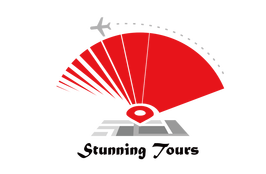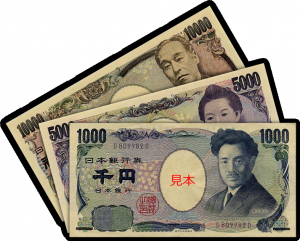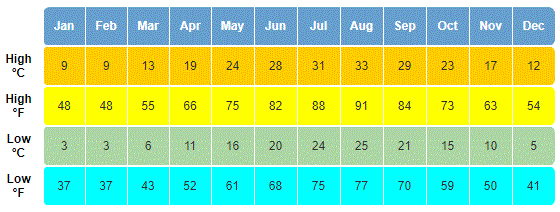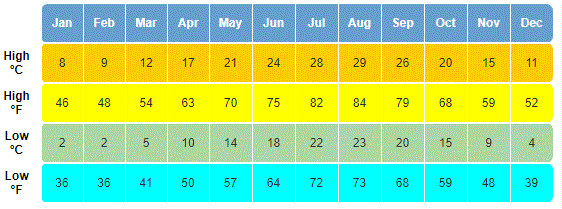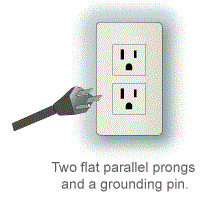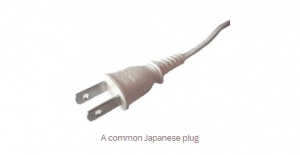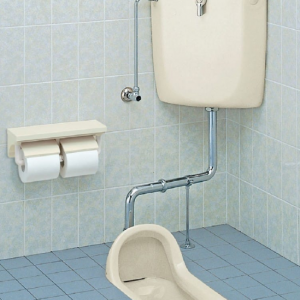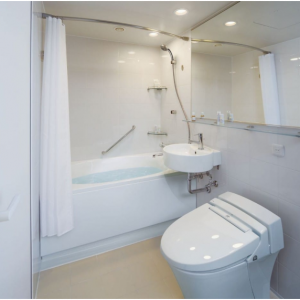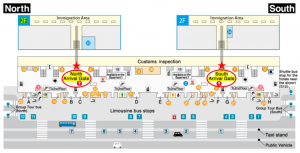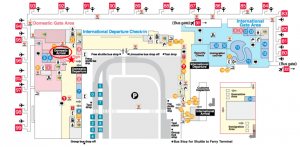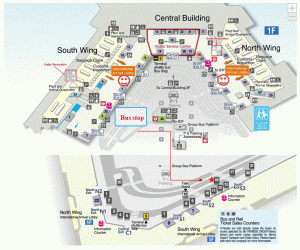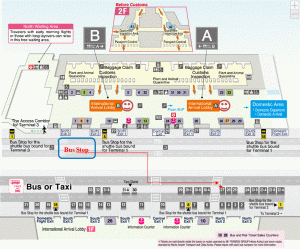Travel Requirement
- A visa is NOT necessary for US passport holders visiting Japan for a short-term stay of less than 90 days with the purpose of tourism.
- All travelers will need a passport valid for at least 90 days following your departure date from Japan. However, we strongly recommend traveling with 6 months validity on your passport at all times.
1. Japanese Currency
The official currency of Japan is the yen. According to the currency exchange rates in recent years, 1 US “dollar” equals around 107 Yen.
2. Exchange currency in Japan
Plan to exchange your money at the airport when you arrive. The rates are the same as at the banks, and you want to have Japanese yen once you leave the airport. It is possible to exchange money at major hotels, but the rates are usually not as good. Exchange any and all cash that you are planning to use while in Japan at the airport. This is the most convenient option because it is difficult to exchange cash once you leave the airport.Large banks and post offices have money exchange counters, but the process can take a long time (sometimes several hours) and you are subject to banking hours.
3. How much cash to bring
Pay by credit card whenever possible. Most mid-range and up restaurants and just about all retail outlets accept credit cards these days. You will lose a percent or two to your credit card company due to their exchange rate spread but it’s better than worrying about having so much cash. Bringing 25,000 Yen for nine days, split it between the two of you when carrying. Japan is a very safe country with a very low crime rate so as long as you exercise typical precautions, you should be OK.
4. Card to use in Japan.
VISA and MasterCard. These cards are widely accepted at stores where credit card payment is taken.
1. International roaming services
International roaming is easy with plans that allow you to use your mobile device while you are traveling outside of the United States.If your mobile phone will work abroad, check your carrier’s roaming rates.Please also verify with your carrier that international roaming is activated before you travel.
2. How to contact with your family
Facebook/Google/Youtube/Instagram/Twitter/Skype can all be used in Japan. No vpn needed for the trip to Japan.
During summer, Japan is 16 hours ahead of U.S. West Coast (17 hours for U.S. East Coast); It is normal that you depart on the 5th of May and arrive China at the 6th.
During winter, Japan is 17 hours ahead of U.S.West Coast (18 hours for U.S. East Coast). It’s normal that you lost a day when flying from the United States to China.
For example:
Los Angeles depart Oct24@1:05am – Osaka arrival Oct25@6:00am (flight length: 13h55m)
Tokyo depart Oct28@1:00pm – Los Angeles arrival Oct28@10:05am (flight length: 12h05m)
1. Voltage
The voltage in Japan is 100 Volt, which is different from North America (120V), Central Europe (230V) and most other regions of the world. You can use your electric appliances in Japan, if the standard voltage in your country is in between 110 – 127 V (as is in the US, Canada and most South American countries). Plugs come in various versions, but most commonly they are non-polarized and ungrounded with two pins. Grounded pins come either with three pins or with two pins and a ground wire.
2. Hertz
The frequency of electric current is 50 Hertz in Eastern Japan (including Tokyo, Yokohama, Tohoku, Hokkaido) and 60 Hertz in Western Japan (including Nagoya, Osaka, Kyoto, Hiroshima, Shikoku, Kyushu); however, most equipment is not affected by this frequency difference. A possible exception are timing devices such as clocks.
1. Hotel confirm date
All the hotel name and information will be included in the final document which will be sent to you one month before your departure
2. Check in and Check out.
Most of hotel in Japan check in time is 3:00pm and check out time is 12:00pm
3. Breakfast
All the hotels we book for this trip will include breakfast. You can choose from traditional Japanese foods or opt for a Western-style meal, or you can try some of each. Yogurt with a selection of fresh fruit is quite appealing, as are the many breads, rolls, and pastries. There is coffee, tea, juice, and even cold cereal with REAL milk Usually breakfast is served from 7:00 am until 10:00 am
1. Seats selection on the plane
There are increasing numbers of airlines charge fees to pre-selecting seats. The prices vary by airlines. If needed, you may contact airlines to make seat selections directly and please be noted that you might experience long waiting time when you call the airlines.Or you may try to select seat on their website, but it’s normal if they do not allow you to pre-selecting seats. If you prefer us to call the airlines on your behalf, our service fee is $50 per person.
2. Wheelchair request for the trip
If you want to request a wheelchair during the tip, you need to call your travel agent for reservation. There will usually have no extra charge for wheelchair, but you need to pay a deposit to the tour guide. If there is no damage to the wheelchair, tour guide will return the deposit in full. If there is some damage to the wheelchair. There will be a penalty.
1. Checked Bags
Most airlines allow two checked bags weighing between 50 and 70 pounds – depending on the airline – when flying to or from the United States. In other countries, airlines use a weight system that might add the weight of your carry-on to your checked baggage. The weight system is very restrictive compared, sometimes allowing luggage no heavier than 22 lbs. Always check your International plane tickets to see which method is in effect.
2. Prohibited Items
Most sharp objects that could have a dual use as a weapon are not allowed in carry-on luggage, except for metal scissors with blades no longer than 4 inches and personal safety razors. Sporting equipment such as bats, golf clubs and ski poles must be in checked luggage only. Common lighters without fuel (non-refillable) are allowed in carry-on, but not in checked baggage. Any item containing gel, such as gel shoe inserts, are prohibited. Containers with 3.4 oz. or less of non-flammable liquid, gel, or aerosol paint are permitted. Tools like screwdrivers, wrenches and pliers are allowed in carry-on luggage if they are less than 7 inches long.
3. Luggage Size and Individual Airlines
Some international airlines have different size, pound and piece restrictions based on fare class and travel zones. Overall, the average weight and size for checked bags is 50 pounds and 62 inches. Average maximum size for carry-on luggage is 45 inches. Luggage is always measured by adding length, width and height, including handles and wheels.
4. Precautions
Check with your airline for its most current restrictions and policies and TSA guidelines for banned or prohibited items. Also, check with your airline for any additional restrictions for individual nations.
Do not lock your baggage unless you have purchased the locks from airports or travel stores that use the “universal master key,” so that TSA security personnel can open your bags.
If unsure if an item is acceptable in a carry-on, put it in your checked luggage to avoid possibly having to throw the thing away at security checkpoints.
Osaka: Kansai International Airport (KIX)
Osaka Kansai Airport Terminal 1 Arrival
- There are only 2 international arrival gate: North Arrival gate and South Arrival gate.
- Tour representative will check your arrival gate and greet you at corresponding gate.
- If you take your own transfers to hotel, you can take hotel shuttle bus at Bus stops, which is close to No. 7 and No. 8.
- Wait for the bus with your hotel name on it.
Osaka Kansai Airport Terminal 2 Arrival
- Most of the flights will arrive at Domestic arrival gate (except Spring Airlines etc.).
- Tour representative will greet you at the gate.
- If you take your own transfers to hotel, you can take hotel shuttle bus at Bus stops.
- Wait for the bus with your hotel name on it.
Metro in Japan
All major Japanese cities have their own urban subway lines. Punctual, safe and never on strike the Japanese subway is the preferred mode of transportation for residents of large cities such as Tokyo.
Train in Japan
There is a large selection of trains in Japan required to travel from one region to another, but also to get around in cities. The three categories of trains that you will have to use on a trip to Japan include:
- Shinkansen, the famous bullet train provides comfort and speed.
- JR trains: the former national railway company is now divided into regional entities, which each manage their own networks.
- Private lines: they are extremely numerous in Japan and often offer a quality equivalent or better service than JR lines, often for a lower rate.
JR pass
1. Traveling Solo
Stunning Tours do not match roommates for our clients. If you are planning to travel alone, please make sure to purchase single supplement so you have your own room.
2. Traveling with a group of your friends
If you are traveling with your family or friends, please be sure to notify your travel agents, so we can help to arrange your group on the same bus. If you are sharing a room with your friend, please also advise your travel agent.
3. Our group tour size
For regular group tour, usually we put a maximum of 36 passengers on a bus. But the number of passengers may be fewer. . For small group tour, the group size will be up to 10-20 passengers.
